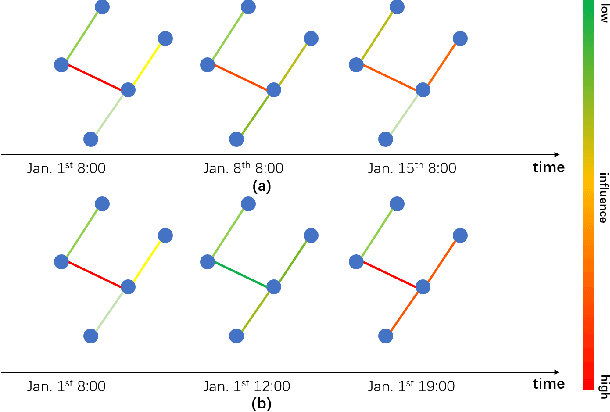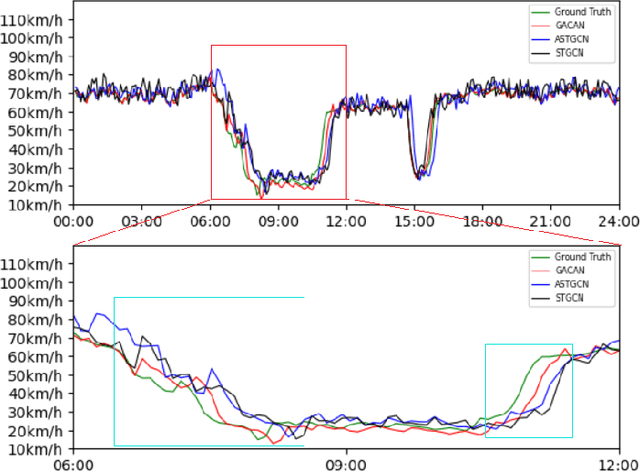Sikai Zhang
Baosight Software
Dictionary-Learning-Based Data Pruning for System Identification
Feb 17, 2025



Abstract:System identification is normally involved in augmenting time series data by time shifting and nonlinearisation (via polynomial basis), which introduce redundancy both feature-wise and sample-wise. Many research works focus on reducing redundancy feature-wise, while less attention is paid to sample-wise redundancy. This paper proposes a novel data pruning method, called (mini-batch) FastCan, to reduce sample-wise redundancy based on dictionary learning. Time series data is represented by some representative samples, called atoms, via dictionary learning. The useful samples are selected based on their correlation with the atoms. The method is tested on one simulated dataset and two benchmark datasets. The R-squared between the coefficients of models trained on the full and the coefficients of models trained on pruned datasets is adopted to evaluate the performance of data pruning methods. It is found that the proposed method significantly outperforms the random pruning method.
Physics-informed machine learning for Structural Health Monitoring
Jun 30, 2022Abstract:The use of machine learning in Structural Health Monitoring is becoming more common, as many of the inherent tasks (such as regression and classification) in developing condition-based assessment fall naturally into its remit. This chapter introduces the concept of physics-informed machine learning, where one adapts ML algorithms to account for the physical insight an engineer will often have of the structure they are attempting to model or assess. The chapter will demonstrate how grey-box models, that combine simple physics-based models with data-driven ones, can improve predictive capability in an SHM setting. A particular strength of the approach demonstrated here is the capacity of the models to generalise, with enhanced predictive capability in different regimes. This is a key issue when life-time assessment is a requirement, or when monitoring data do not span the operational conditions a structure will undergo. The chapter will provide an overview of physics-informed ML, introducing a number of new approaches for grey-box modelling in a Bayesian setting. The main ML tool discussed will be Gaussian process regression, we will demonstrate how physical assumptions/models can be incorporated through constraints, through the mean function and kernel design, and finally in a state-space setting. A range of SHM applications will be demonstrated, from loads monitoring tasks for off-shore and aerospace structures, through to performance monitoring for long-span bridges.
GACAN: Graph Attention-Convolution-Attention Networks for Traffic Forecasting Based on Multi-granularity Time Series
Oct 27, 2021



Abstract:Traffic forecasting is an integral part of intelligent transportation systems (ITS). Achieving a high prediction accuracy is a challenging task due to a high level of dynamics and complex spatial-temporal dependency of road networks. For this task, we propose Graph Attention-Convolution-Attention Networks (GACAN). The model uses a novel Att-Conv-Att (ACA) block which contains two graph attention layers and one spectral-based GCN layer sandwiched in between. The graph attention layers are meant to capture temporal features while the spectral-based GCN layer is meant to capture spatial features. The main novelty of the model is the integration of time series of four different time granularities: the original time series, together with hourly, daily, and weekly time series. Unlike previous work that used multi-granularity time series by handling every time series separately, GACAN combines the outcome of processing all time series after each graph attention layer. Thus, the effects of different time granularities are integrated throughout the model. We perform a series of experiments on three real-world datasets. The experimental results verify the advantage of using multi-granularity time series and that the proposed GACAN model outperforms the state-of-the-art baselines.
* This paper has been published in the IJCNN 2021 (https://ieeexplore.ieee.org/document/9534064/)
Canonical-Correlation-Based Fast Feature Selection
Jun 15, 2021



Abstract:This paper proposes a canonical-correlation-based filter method for feature selection. The sum of squared canonical correlation coefficients is adopted as the feature ranking criterion. The proposed method boosts the computational speed of the ranking criterion in greedy search. The supporting theorems developed for the feature selection method are fundamental to the understanding of the canonical correlation analysis. In empirical studies, a synthetic dataset is used to demonstrate the speed advantage of the proposed method, and eight real datasets are applied to show the effectiveness of the proposed feature ranking criterion in both classification and regression. The results show that the proposed method is considerably faster than the definition-based method, and the proposed ranking criterion is competitive compared with the seven mutual-information-based criteria.
Orthogonal Least Squares Based Fast Feature Selection for Linear Classification
Jan 21, 2021



Abstract:An Orthogonal Least Squares (OLS) based feature selection method is proposed for both binomial and multinomial classification. The novel Squared Orthogonal Correlation Coefficient (SOCC) is defined based on Error Reduction Ratio (ERR) in OLS and used as the feature ranking criterion. The equivalence between the canonical correlation coefficient, Fisher's criterion, and the sum of the SOCCs is revealed, which unveils the statistical implication of ERR in OLS for the first time. It is also shown that the OLS based feature selection method has speed advantages when applied for greedy search. The proposed method is comprehensively compared with the mutual information based feature selection methods in 2 synthetic and 7 real world datasets. The results show that the proposed method is always in the top 5 among the 10 candidate methods. Besides, the proposed method can be directly applied to continuous features without discretisation, which is another significant advantage over mutual information based methods.
 Add to Chrome
Add to Chrome Add to Firefox
Add to Firefox Add to Edge
Add to Edge